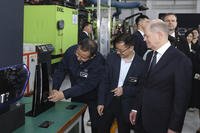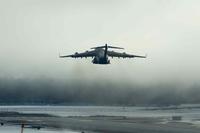Most of us are familiar enough with the origins of the Navy’s “Topgun” Fighter Weapons School at Miramar Naval Air Station outside San Diego, Ca., having seen the Tom Cruise movie of the same name. (That was, of course, back before we discovered Cruise was nuts and we could actually watch his movies.) Topgun was the brainchild of some enterprising officers in the Navy’s fighter community who were alarmed at the poor performance of Navy fighters going up against North Vietnamese MiGs.
Barry Watts, senior fellow at the Center for Strategic and Budgetary Assessments - the super smart folks who push the revolution in military affairs - told a group of defense experts in Washington, DC, that Topgun was central to the U.S. military’s “revolution in training affairs,” a revolution that began in the skies over Southeast Asia. He provided some interesting data that showed why Topgun proved so effective. While many readers may be familiar with this story, parts bear repeating.
By 1967, Navy fighter pilots were having less and less success in air-to-air combat against small, agile North Vietnamese MiGs. Navy pilots were flying the aging F-8 Crusader and the more advanced F-4 Phantom II. In the final stages of Operation Rolling Thunder (October 1967-October 1968), Navy pilots shot down only nine MiGs and lost six jets in the process. Most alarming, the costly F-4 scored only three of the MiG kills while accounting for all six of the American jets downed.
In response to those dismal returns, the Navy stood-up Topgun in late 1968 and by mid-1972, more than 200 naval aviators had undergone the intense air-to-air combat training. The results were, well, dramatic. From January 1972 to January 1973, Navy F-4s downed 24 MiGs against just two losses, a twenty-four fold increase in effectiveness over the performance during Rolling Thunder. As Watts said, comparing the two periods is as close to controlled experiment as can be found in actual combat. Of course the Air Force later followed suit with “Red Flag” at Nellis, the Army, many years later, with the NTC at Ft. Irwin and the Marine Corps with their combat training center at Twentynine Palms.
The value in Topgun’s realistic training, Watts explained, was that it greatly improved pilot’s situational awareness, the primary determinant of combat outcomes. A detailed reconstruction of 112 engagements between U.S. fighters and North Vietnamese MiGs, resulting in either a U.S. or North Vietnamese kill, showed that 80 percent of the losses came about because pilots lost situation awareness. Around 60 percent of the aircraft were hit before the pilots knew they were under attack and a further 20 percent of pilots knew they were under attack but it was too late to do anything about it.
Watts quoted a 1974 Navy F-4 pilot who passed through Topgun on the school's role in improving situation awareness: “When I first started I could not see a camouflaged A-4 past 3 miles and had trouble finding my wingie on a 2-v-1 (two F-42 versus one adversary). Now I can track A-4s and T-38s out to 8 miles, take notes, and thoroughly debrief 2-v-2 hops from start to finish.”
The importance of situation awareness not only applies to air-to-air combat, Watts said, but virtually all types of combat. He pointed to the IED challenge in Iraq and Afghanistan as one that is fundamentally about situation awareness. The point he makes is that realistic training could be used to improve results for forward air controllers and artillery spotters. In Afghanistan, soldiers told me they had too little training calling in mortar or artillery fire, so when they targeted distant Taliban positions, they mostly missed their targets who then displaced.
A bit of bad news according to Watts: trend lines suggest realistic combat training won’t provide the margin of advantage as it has in the past. One reason is the increasing automation of weapons systems that are less dependent on the skills of the operator, a trend line that eventually takes you to autonomous robots. Another is the increasing availability of GPS equipped precision weapons that don’t rely on skill and training to achieve accurate hits. U.S. forces no longer enjoy a monopoly on such weapons that are becoming readily available to guerrilla fighters the world over.
Also, synthetic training environments, driven in part by the commercial gaming industry, can imitate the virtual training environments previously found only at the military’s most advanced facilities. The spread of computer-based virtual training technologies means potential adversaries are no longer priced out of a valuable tool that can increase tactical skills and proficiency.







